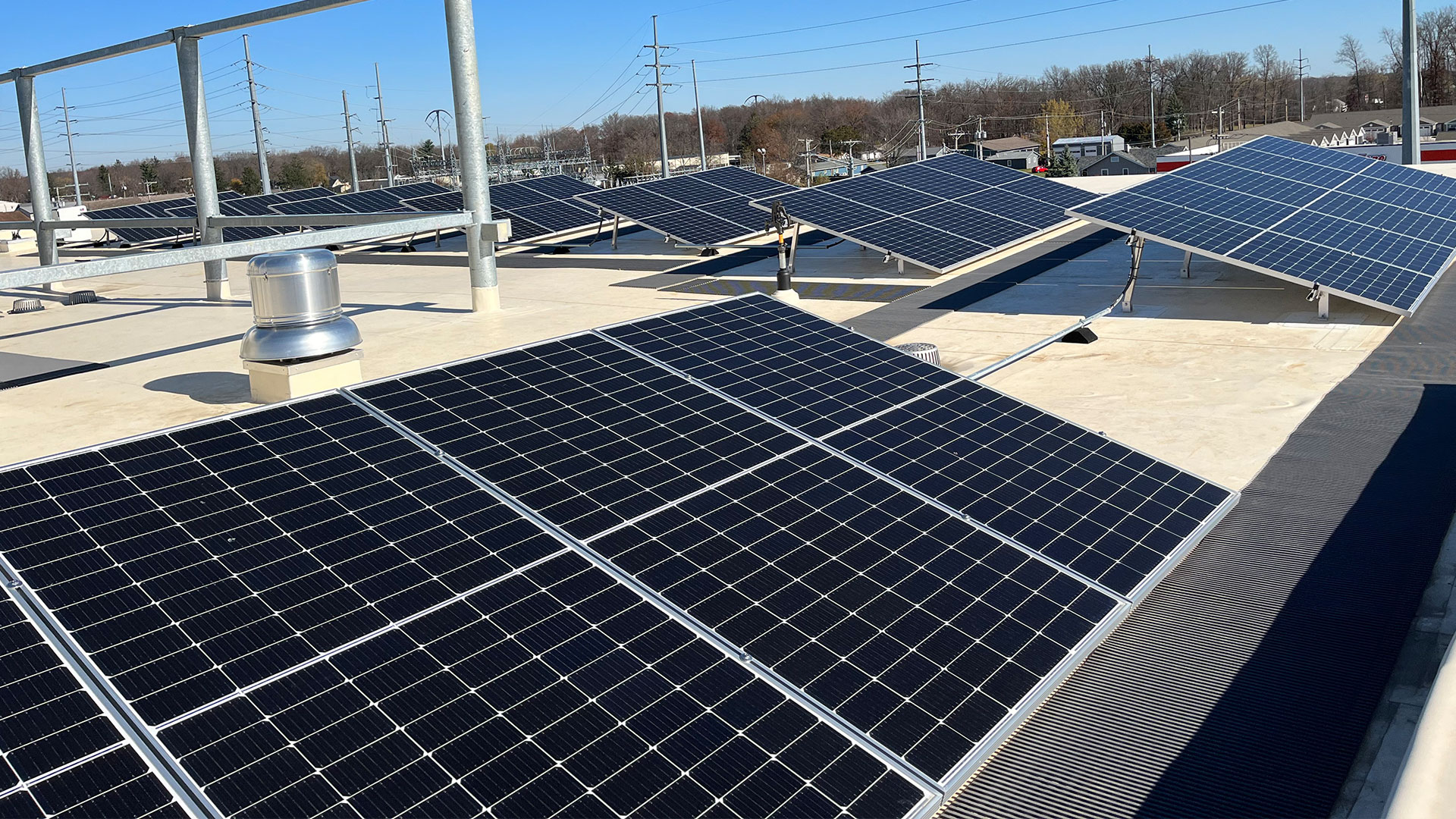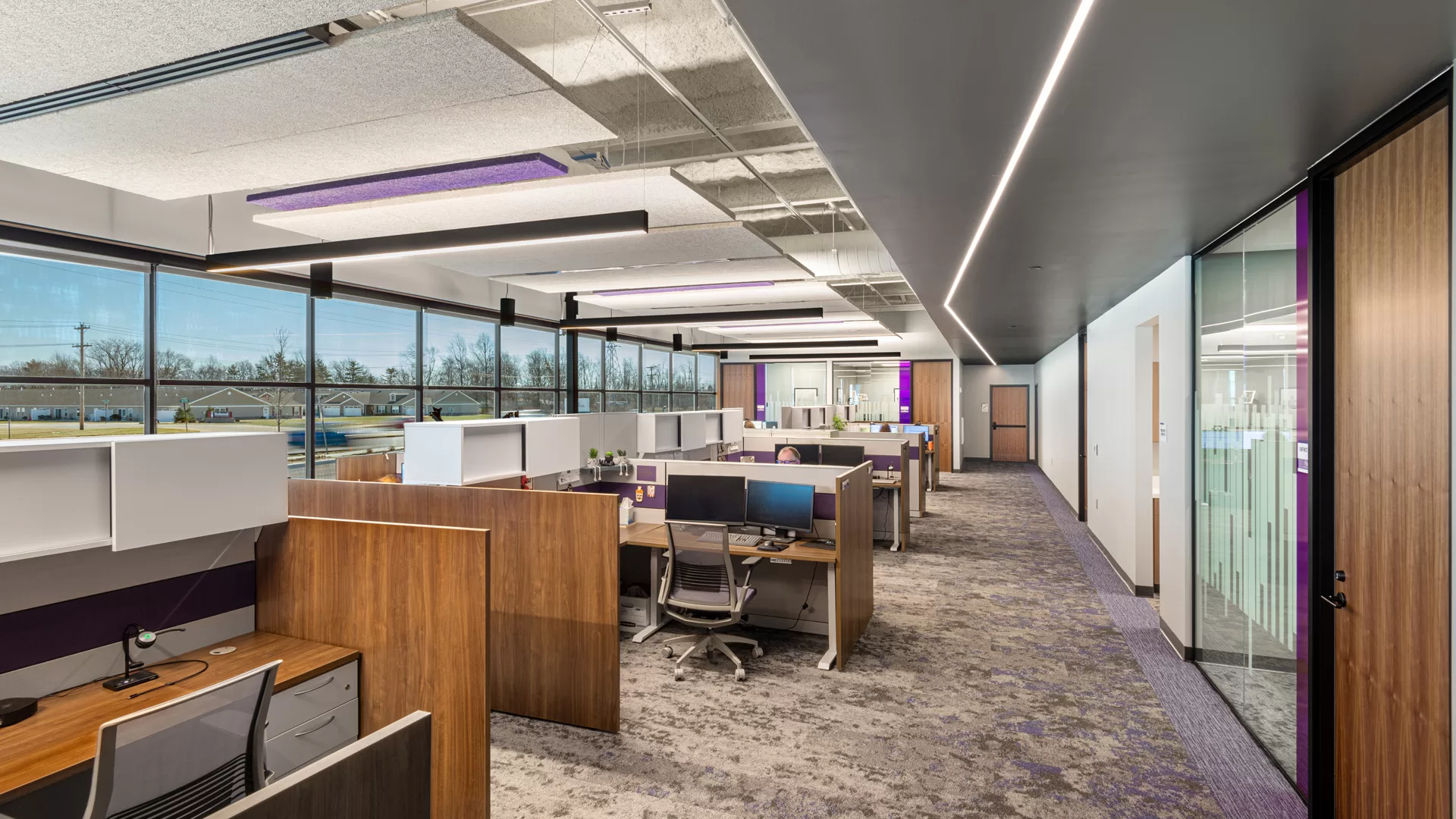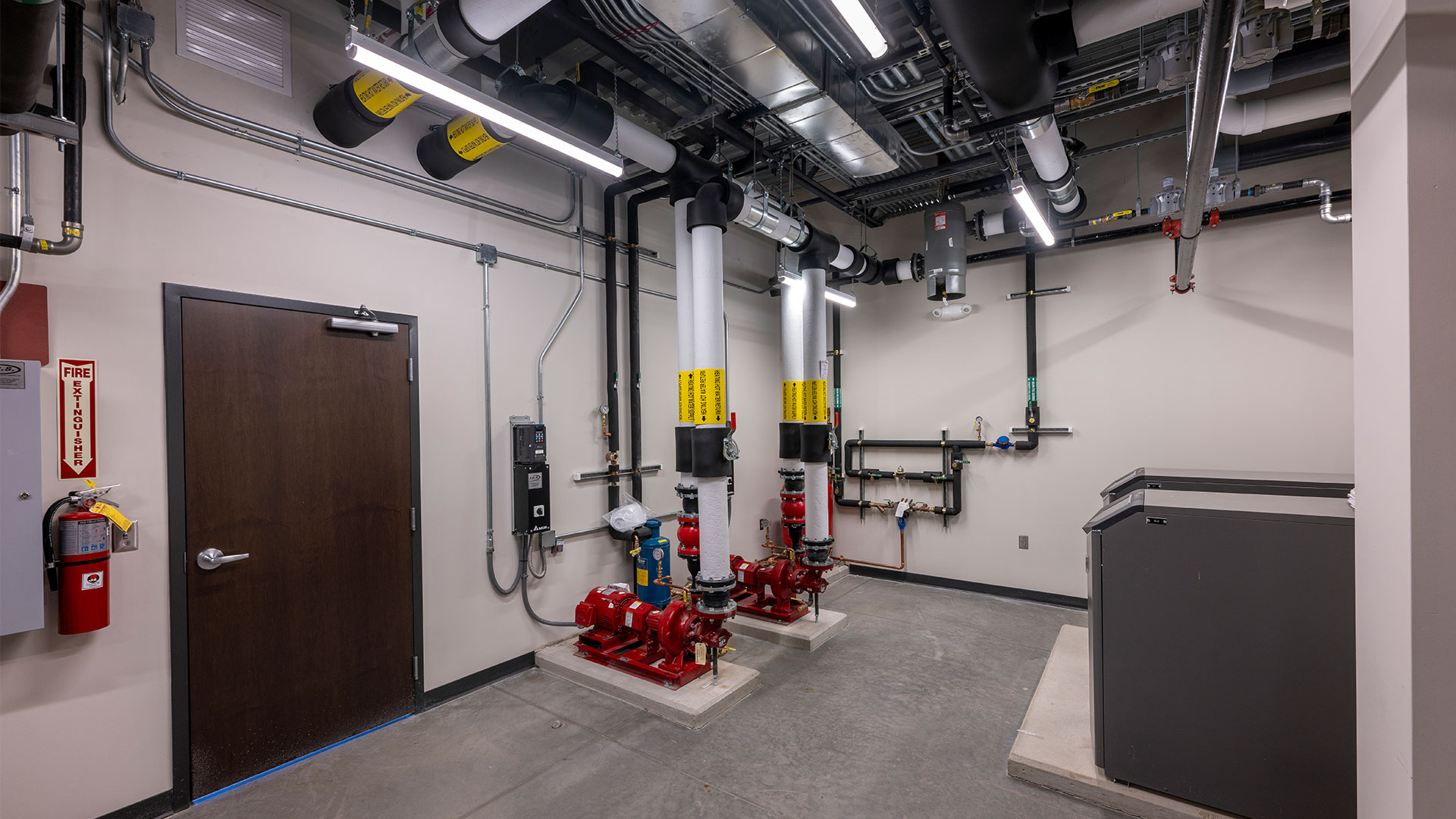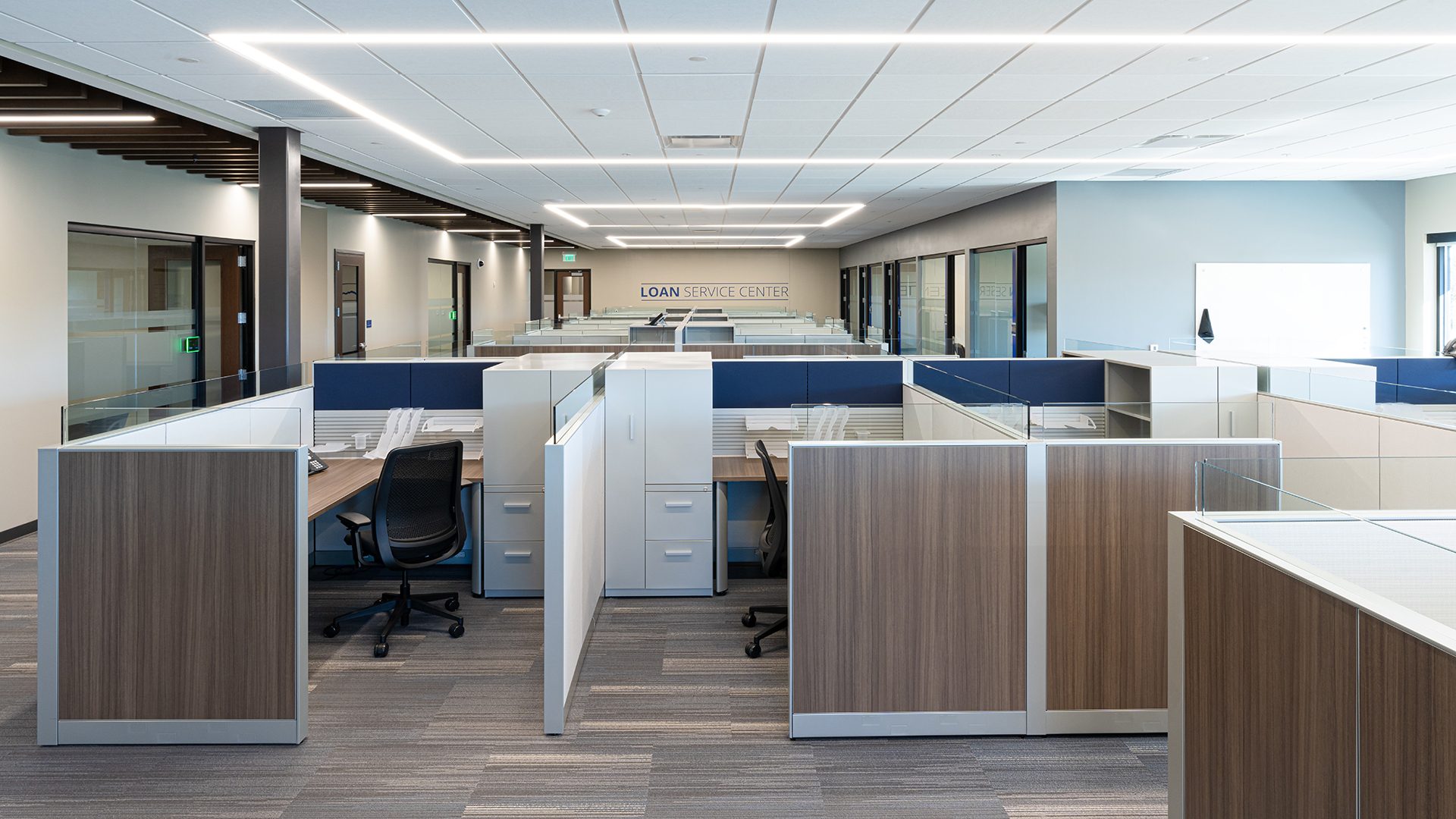Designing for Reliability: MEP Engineering Strategies for Financial Operations Centers
By Jordan Backer, PE Cooper Hill
June 30, 2025Post Tagged in
In the world of financial services, continuity is everything. That’s why when it comes to designing a financial operations center, the behind-the-scenes infrastructure—mechanical, electrical, and plumbing (MEP) systems—deserves just as much attention as the visible architecture.These systems form the foundation of operational resilience, employee comfort, safety, and long-term energy efficiency. In this article, our banking design experts explore the critical MEP engineering considerations that support the round-the-clock performance required of modern operations centers. |
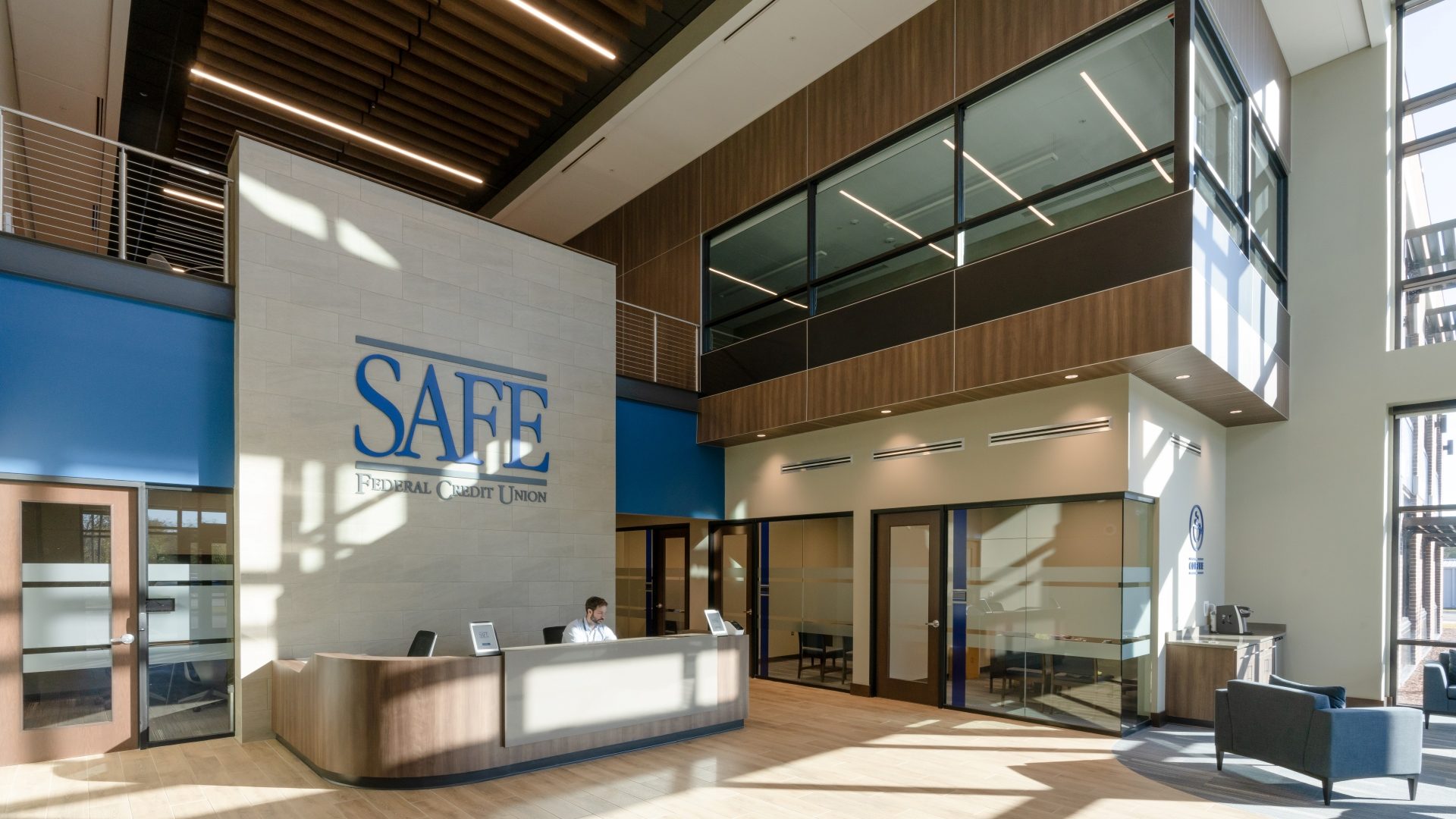
|

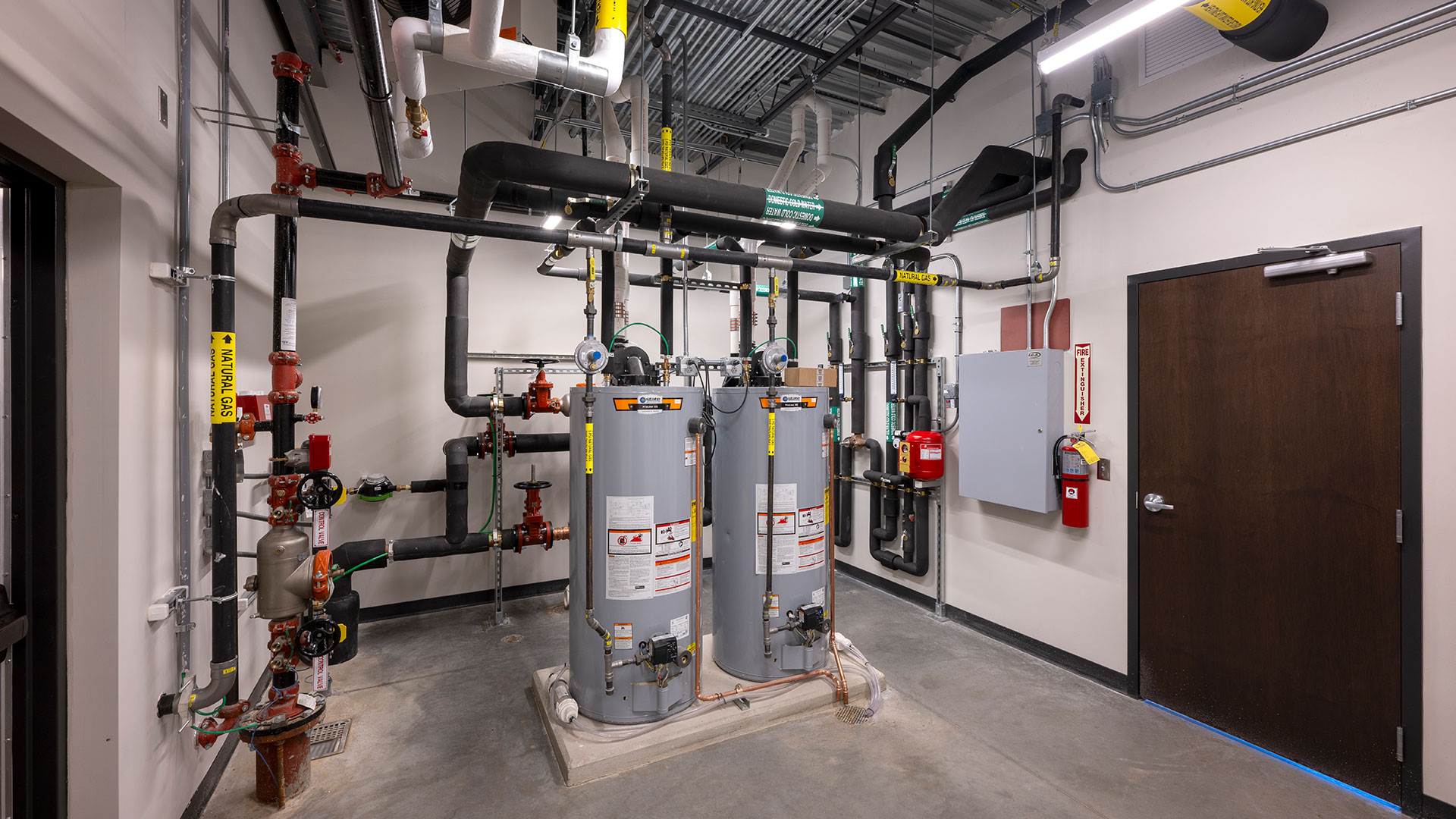 |
1. Mechanical Engineering (HVAC)Employee ComfortA productive work environment begins with climate control. In spaces ranging from open call centers to private offices and conference rooms, thermal comfort directly impacts employee satisfaction and efficiency.
Indoor Air Quality (IAQ)Healthy indoor air supports a healthy workforce. Proper ventilation and HVAC systems designed to meet fresh air intake standards are essential to maintaining IAQ and reducing airborne contaminants. IT CoolingServer rooms and IT spaces demand precision cooling systems. Separate, dedicated cooling—often with redundancy—helps maintain optimal conditions while minimizing strain on backup power systems. Energy EfficiencyHVAC can account for nearly 30% of a building’s energy usage. Implementing energy-efficient strategies—like Variable Air Volume (VAV) systems managed by intelligent Building Management Systems (BMS)—can significantly lower operating costs and extend equipment lifespan. |
